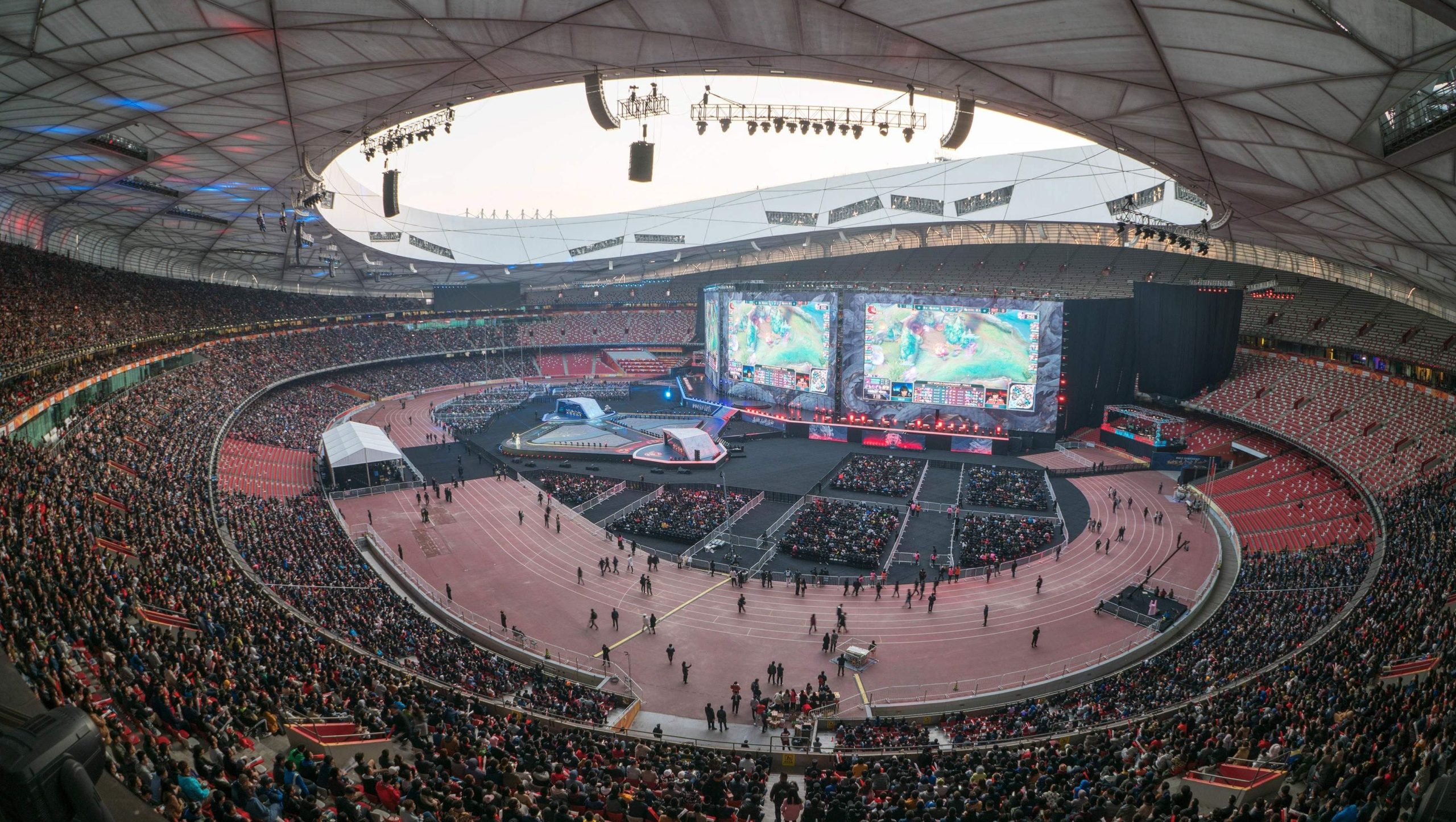Table of Contents Show
One of the biggest entertainment frontiers of today is esports, a portmanteau for ‘electronic sports’ which academics and mainstream news alike have been struggling to define. It has mostly been understood to refer to organized, professionalized, competitive video gameplay, but it also represents an entire world of broadcast entertainment and organization which vary significantly. Esports is a big business with a huge fanbase, and it’s still growing.
Electronic sport has been stumping mainstream news websites and papers ever since they caught wind of the large prize pools and viewer base of games like “League of Legends” and “Fortnite.” There’s been a recent boom in news articles written in incredulous tones, which rant about the times we’re living in, where watching people play video games online has become more popular than the World Series or the NBA finals ((Casselman, Ben. “Resistance is futile: eSports is massive… and growing.” ESPN, May 22, 2015.)).
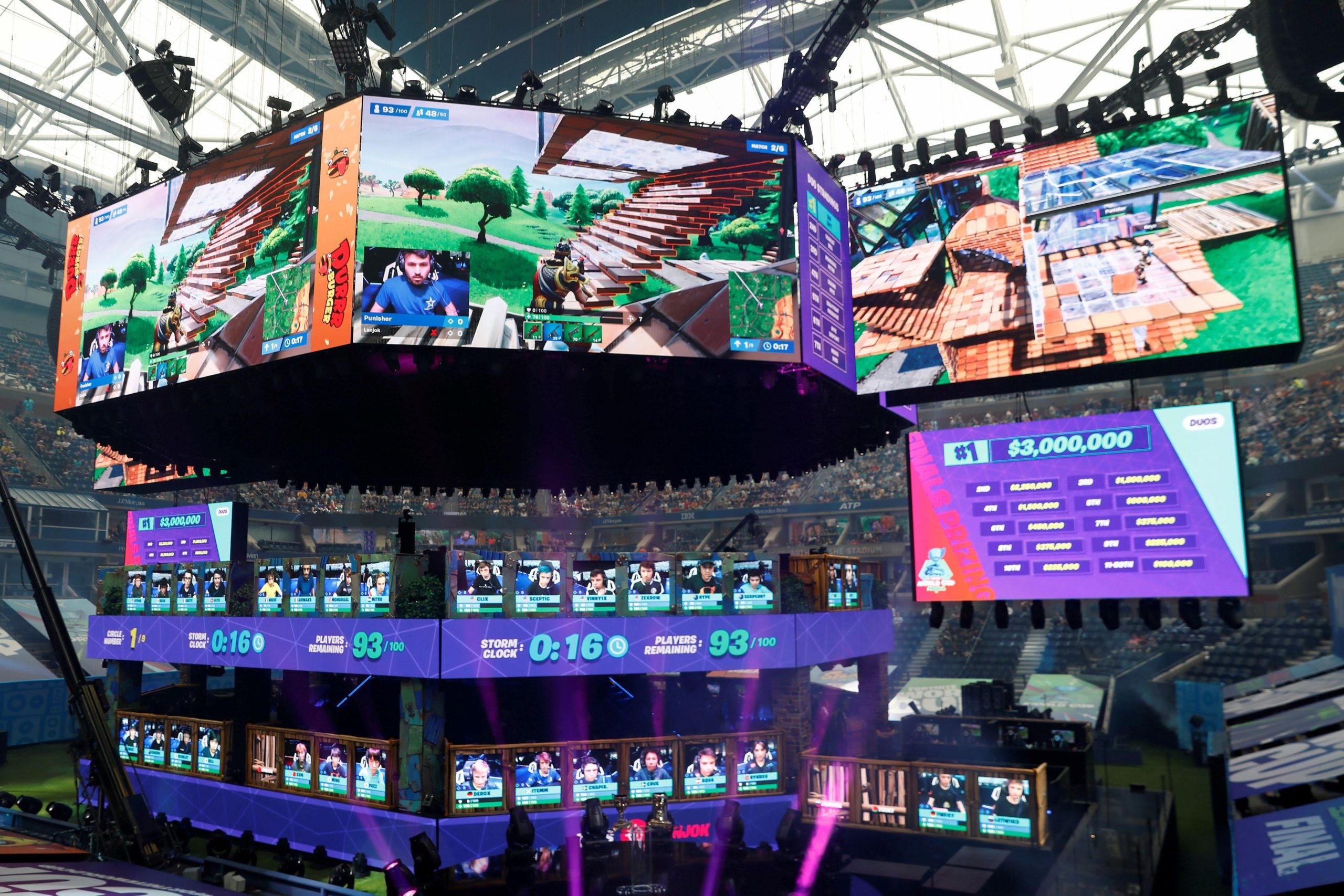
It’s clear in the tone of the news coverage that no one knows what to do with this industry. The numbers are big. NewZoo, a games market analytics company, claims that the 2018 esports market yielded 856 million in profit (( Maloney, Tim. “How Do Esports Teams Make Money.” Roundhill Investments, February 12, 2020. )) A large number of traditional sports stakeholders, including Michael Jordan, A-Rod, and Ashton Kutcher, have invested significant amounts of money into this new arena (( Marcus, Daniel. “Following The Money In Esports.” Forbes, December 30, 2019. ))
Big numbers are being thrown around with little consistency and context, which obscures actual industry data. The only thing that investors know for sure is that the industry is rapidly growing and is predicted to become massive by 2022 with some expecting revenues to be up to 1.79 billion (( Maloney, Tim. “How Do Esports Teams Make Money.” Roundhill Investments, February 12, 2020. ))
“Gaming is what every traditional sports league is desperate to become: young, global, digital, and increasingly diverse.”
(( Casselman, Ben. “Resistance is futile: eSports is massive… and growing.” ESPN, May 22, 2015. ))
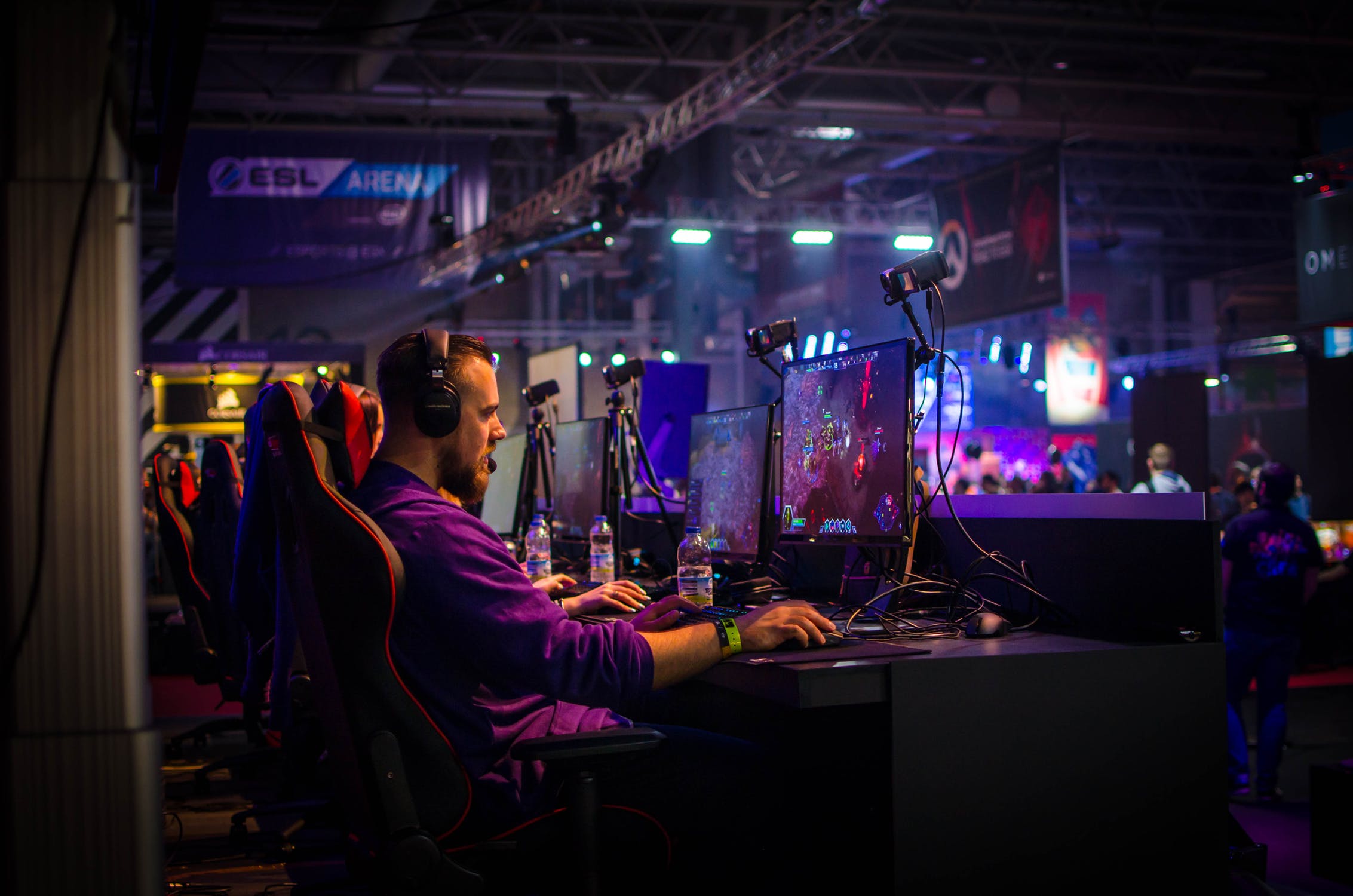
The divide between electronic sports and traditional media productions makes the industry a confusing place. Esports, while it often crosses over or borrows features from traditional sports media, has historically operated outside of traditional media production and distribution structures, existing mainly on the internet as user-generated content.
User-generated content refers to content that is produced by consumers rather than firms, corporations, or publishers. For example, Facebook, Instagram, and Twitter are platforms which are filled with user-generated content. Without user-generated content, social media would be a blank space. One of the clearest examples of the divide between esports and traditional media has been created by the pandemic; while all other sport productions have shut down, the Overwatch League has been functioning (mostly) as normal, with players and casters broadcasting from their homes.
History of Esports
Esports isn’t a new industry, rather it is inherent to video games due to their often competitive nature. “Spacewar,” made by scientists at MIT in 1962, is largely considered the world’s first digital computer game. The first esports tournament followed “Spacewar’s” creation closely. The Intergalactic Spacewar Olympics were hosted in 1972 by the Laboratory for Artificial Intelligence at Stanford University. Competitive video gaming continued to grow as the 1980 “Space Invaders Championship” attracted around 10,000 competitors (( Larch, Florian. “In 70 Years: The Evolution of eSports into a Market Worth Billions.” ISPO, January 11, 2019. ))

Esports is a fully realized industry with a long legacy, including different eras of evolution. T. L. Taylor, an academic who has done extensive research on professionalized competitive gaming, divides the history of electronic sport into three waves: one where game was the predominant framing of esports, one where sport was the predominant frame, and finally, the present one where media entertainment is the predominant framing.
The first wave was rooted in leisure culture, with amateur competitions organized by enthusiastic communities. In the second wave, third-party organizations emerged which created the infrastructure for professional video gaming. The third wave brings us to the present, where media production and entertainment are emphasized, turning tournaments into large media events while also solidifying previous infrastructures (( Taylor, T. L.. Watch Me Play : Twitch and the Rise of Game Live Streaming, Princeton University Press, 2018, 137 )).
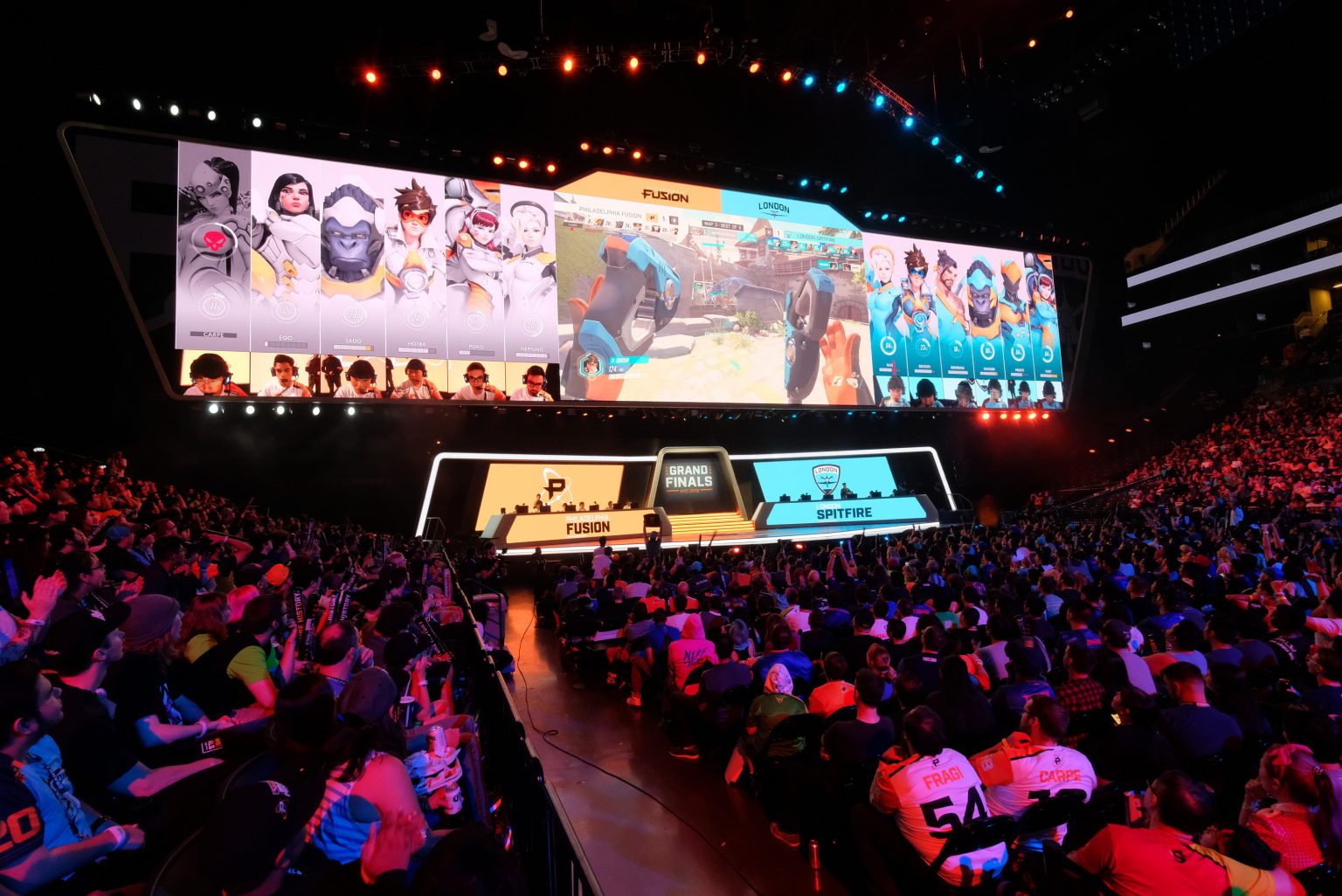
While T.L. Taylor identifies three waves in the conceptual development of esports, Kenon A. Brown, Andrew C. Billings, Breann Murphy, and Luis Puesan identify two distinct periods in the literal development of electronic sports: the arcade era and the internet era. The arcade era (1980-1990), which was populated by games like “Pac-Man,” “Donkey Kong,” and “Centipede,” legitimized esports through the use of formal record keeping and set competition guidelines.
The rise of the internet shifted the focus from consoles to PCs and electronic sports grew even larger. The internet removed regional barriers, allowing for a transnational video game culture (( Brown, K. A., A. Billings, Breann Murphy and Luis Puesan. “Intersections of Fandom in the Age of Interactive Media.” Communication & Sport 6 (2018): 418 – 435. )) The esports industry has developed outside of media industry structures. The governing bodies of esports were not the game publishers or media executives, they were the fans or players themselves.
Television Versus Twitch
Current esports monetization models look similar to the current sports broadcast model, where “media, sponsorship, live events, merchandise, and prize winnings are the pillars,” but electronic sport often struggles to exist in traditional media structures (( VB Staff. “The esports monetization opportunity is wide open– here’s how to take your shot.” VentureBeat, December 21, 2018. )) The preferred avenues of viewership for esports fans are platforms like Twitch or Youtube, rather than cable. 4.5 million people used Twitch during a single day of an esport global tournament (( Understanding Esports: An Introduction to the Global Phenomenon, edited by Ryan Rogers, Lexington Books, 2019, 39. ))
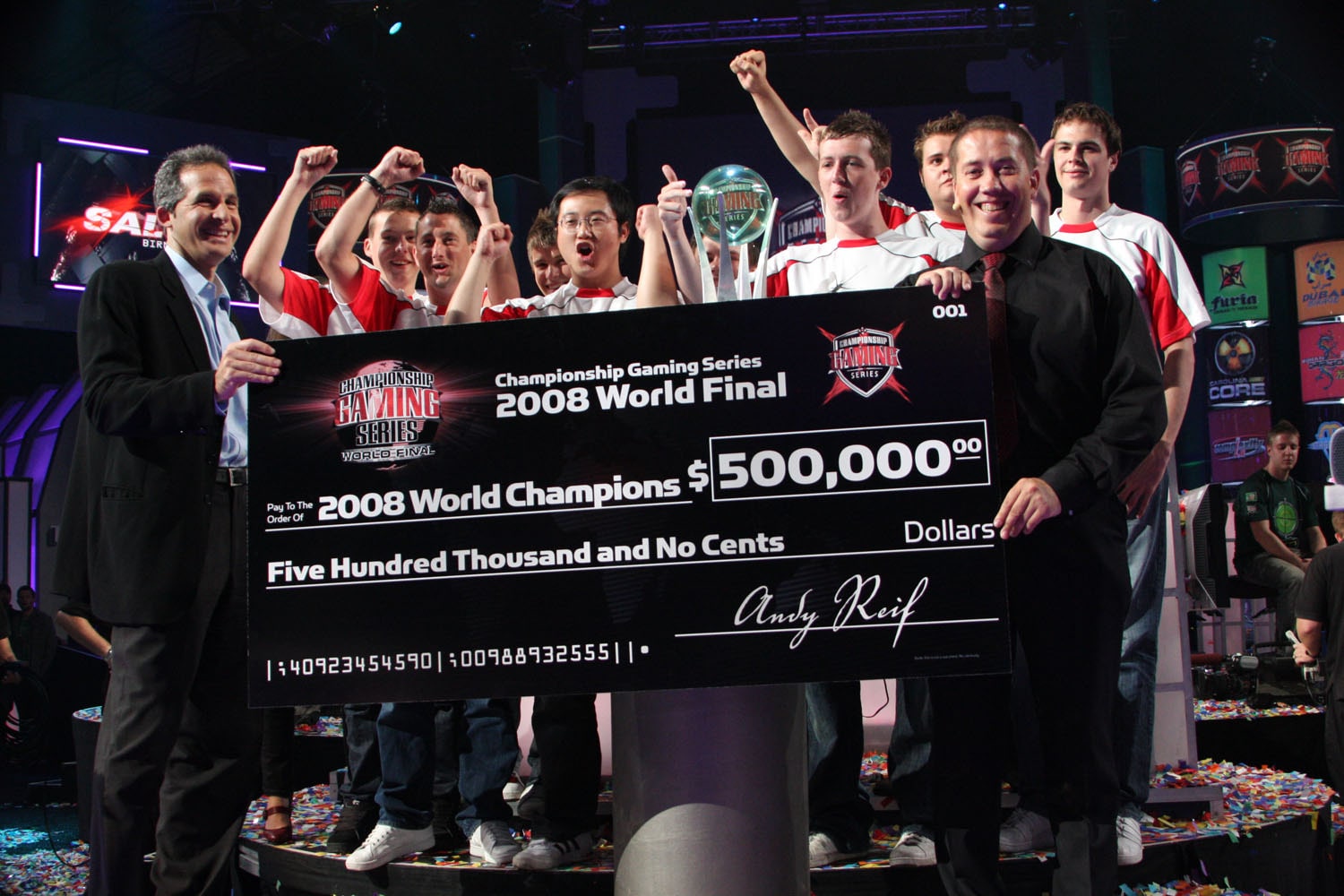
In the early days of esports, there came a push to bring it to television, in the hopes that this move would legitimize esports as a “real sport.” The most well-known attempt was 2007’s Championship Gaming Series, a partnership between DirectTV, British Sky Broadcasting, and Star TV. The nature of esports was altered to fit the big screen, as established rules and tournament structures were changed to fit more of a boxing style production. Gameplay was difficult to show or make exciting, and the casters had a hard time explaining the action to those unfamiliar with the games. The show ended by 2008, and its failure also took out many North American esports structures with it (( Taylor, T. L. Watch Me Play: Twitch and the Rise of Game Live Streaming, Princeton University Press, 2018, 139. ))
The industry learned that old broadcast styles simply didn’t work for electronic sports, and this boiled down to the difference between how traditional sports and esports were connected to media. Traditional sports broadcast takes the physical action of play and distributes it through a media lens, while competitive, professional video gaming is sports as media. Esports can’t be separated from technology (( Hutchins, Brett. (2008). Signs of meta-change in second modernity: The growth of e-sport and the World Cyber Games. New Media & Society. 10. 851-869. 10.1177/1461444808096248. ))
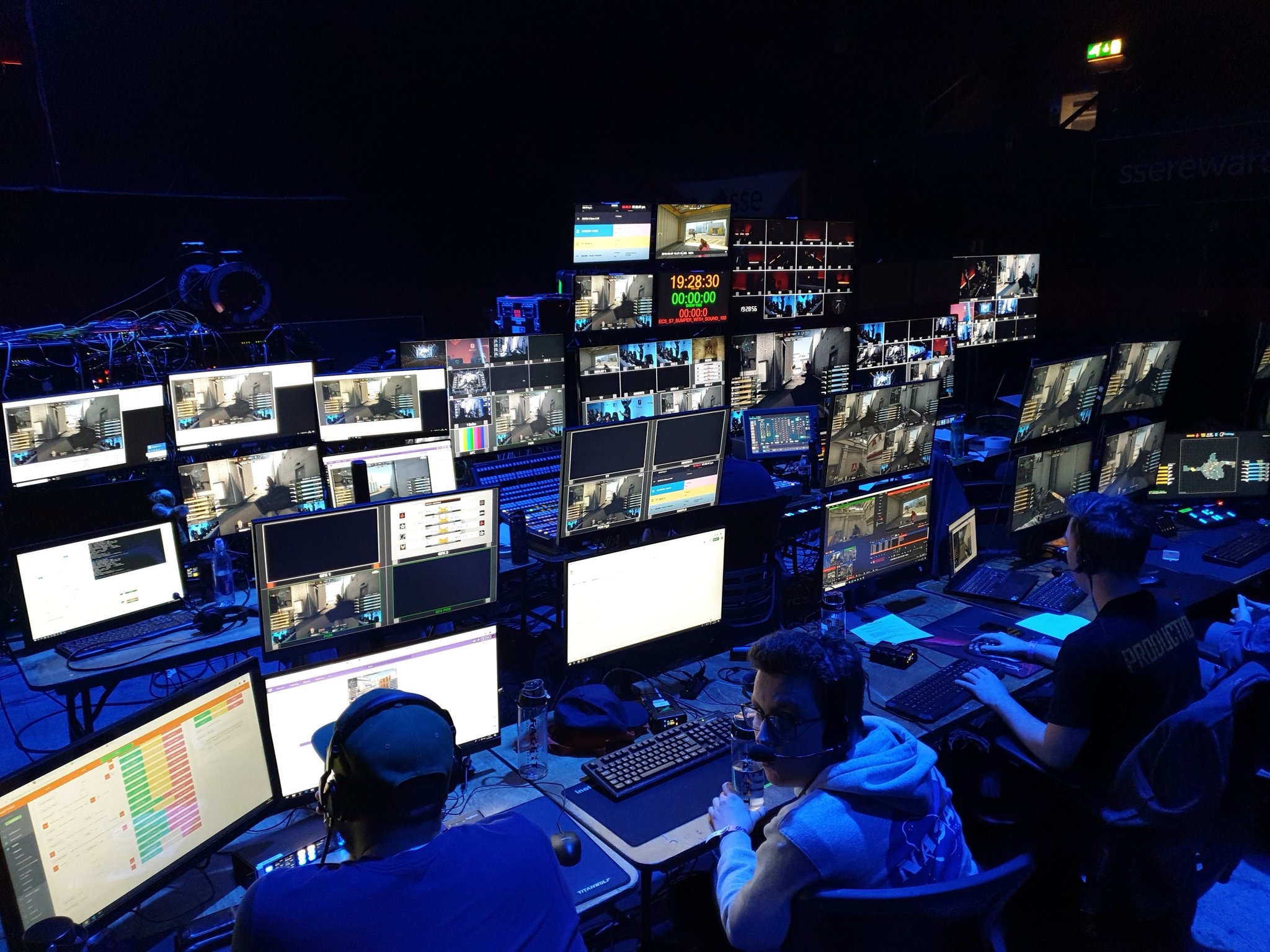
Esports events often produce content at resolution levels far beyond those used in traditional productions and have sometimes prompted media companies to upgrade their own systems. Much of the gear used to stream games is traditional media production gear that has been tweaked or ‘hacked’ to work for esports (( Taylor, T. L.. Watch Me Play: Twitch and the Rise of Game Live Streaming, Princeton University Press, 2018, 161 )).
Esports production requires new structures and jobs, as there are dedicated professionals whose jobs are to control gameplay camera angles, often becoming familiar enough with the game that they can predict plays. Heads up displays (HUDs) have to be organized to convey information to make confusing actions legible. Though they often borrow techniques from traditional broadcasts, esports cannot slot into existing media structures.

A second attempt to put esports on cable was made by Turner Broadcasting in 2015. It was relatively well-received, but one long-time esports organizer highlighted that ELEAGUE is “… a tool to funnel a TV audience onto Twitch.” If someone enjoyed TBS content, they would likely “migrate to Twitch,” where the majority of the content is (( Taylor, T. L.. Watch Me Play: Twitch and the Rise of Game Live Streaming, Princeton University Press, 2018, 206 )). Electronic sports are quintessentially online. Although there are sometimes physical events, the majority of the action is broadcasted on the internet for free.
Monetization
While esports may make money off of advertising, investments, and media deals like traditional sports, there is still a large divide between electronic sports and traditional sports in regards to one particular monetization strategy: subscriptions (( Molina, Brett. “Why watch other people play video games? What you need to know about esports.” USA Today, January 12, 2018. )) ESPN may have begun broadcasting esports, but most esports spectators will not pay to watch.

The industry’s roots in the internet, where content is widely accessible and mostly broadcast for free, make consumers unlikely to buy a cable subscription to watch esports. This sense of entitlement to free entertainment can be seen in electronic sports profits. The money should be there, as esports events are consistently beating out traditional sports in terms of viewers, yet Goldman Sachs recently reported that “the average esports consumer monetized to about $3.94, whereas the average consumer in traditional sports is monetizing to about $54” (( VB Staff. “The esports monetization opportunity is wide open– here’s how to take your shot.” VentureBeat, December 21, 2018 )).
Impact Of Division
The division of esports from traditional broadcast models has had a large impact on the relationship between consumer and producer. For better or worse, there is a higher degree of interactivity in esports. One of the key features of an esports production is the live chat, where viewers can react to gameplay, interact with other fans, and cheer on their favorites. Professional players, who are either active on social media or livestream themselves, are very approachable. In traditional sport, sport occurs and is then transmitted to consumers, but esport happens all at once, which can blur the lines between producer and consumers.
Labor Rights
While there are definitely positive traits resulting from the division of esports from traditional broadcast models (mainly a democratization of content), there are negatives as well. The millions of dollars in profits that the industry is reporting is not reflected in wages for players, casters, or behind-the-scenes workers, which may be part of the reason why industry reports are so lucrative.
There is little standardization throughout the industry in salary, and there are no unions. One group of esports casters noted that a famous video game company, Riot Games, which created “League of Legends” (the largest esports event/league in the world), offered them forty to seventy percent less than other productions. The only reason the casters were aware of this is that they did research on a wide range of caster contracts (( Taylor, T. L. Watch Me Play: Twitch and the Rise of Game Live Streaming, Princeton University Press, 2018, 167 )).
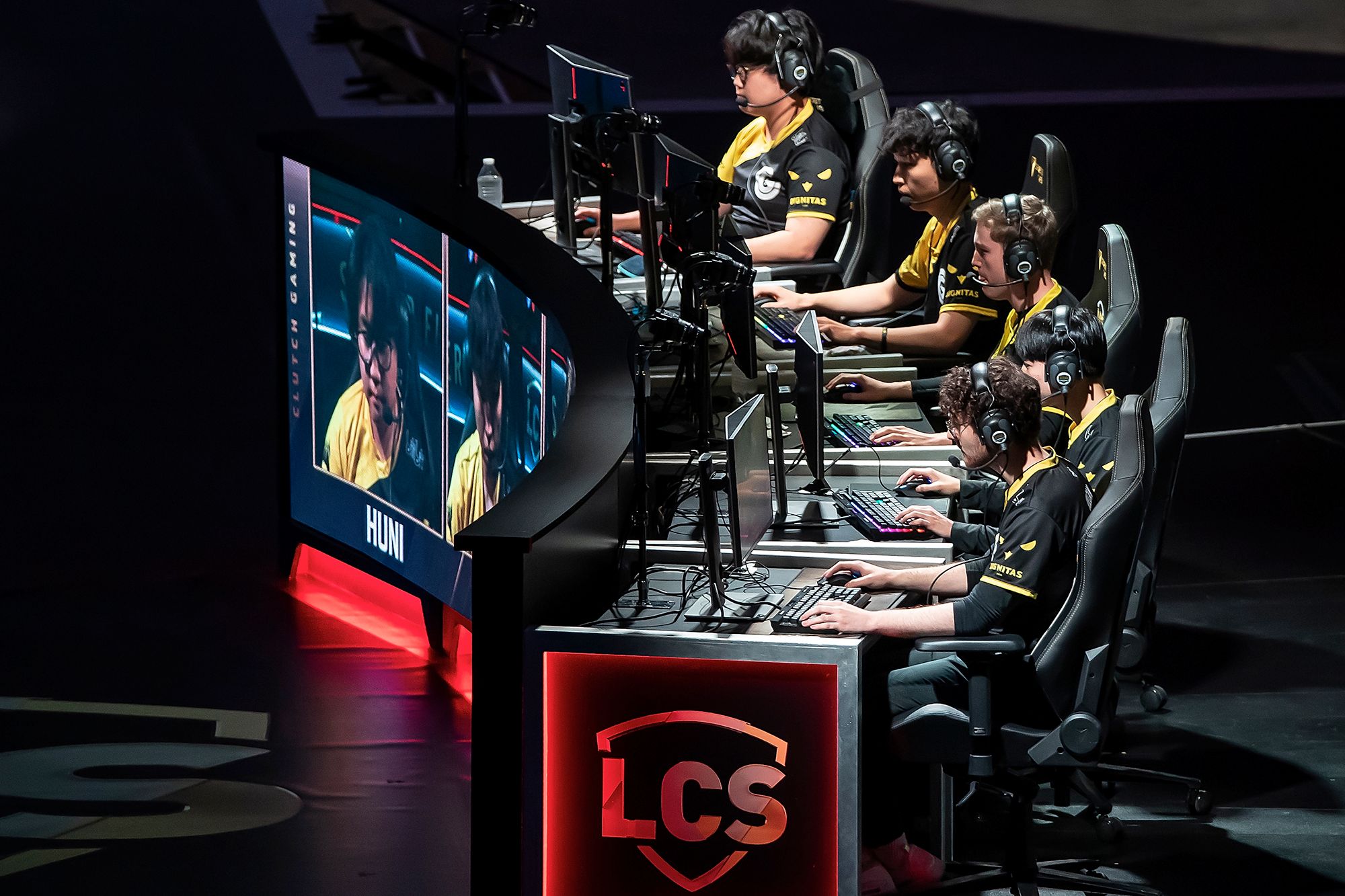
The industry may be stable for investors, but for actual workers, it is far from it. Esports player careers are extremely short, most lasting only two to three years due to burnout. It’s a young person’s game, as most top gamers stop competing far before they turn thirty (( DiChristopher, Tom. “Pro gamers story: Get big, burn out, retire young.” CNBC, February 3, 2014. )) Since esports isn’t considered a physical sport, players will practice for long hours with little breaks. The pros will often play and scrimmage for about eight hours a day and then are expected to stream themselves playing for another couple of hours afterward.
The players are often young kids “who are more than willing to get taken advantage of for a chance to ‘play games for a living’ (( Gera, Emily. “Why the unionization of eSports is a difficult if not impossible road.” Polygon, July 19, 2013. )) The gaming website Polygon published an article in 2013 titled “Why the unionization of eSports is a difficult if not impossible road.” In it, they interviewed several players and esports organizers on the likelihood or role of unionization in the esports industry. The article illuminates why the industry is so profitable for investors and so unstable for workers.
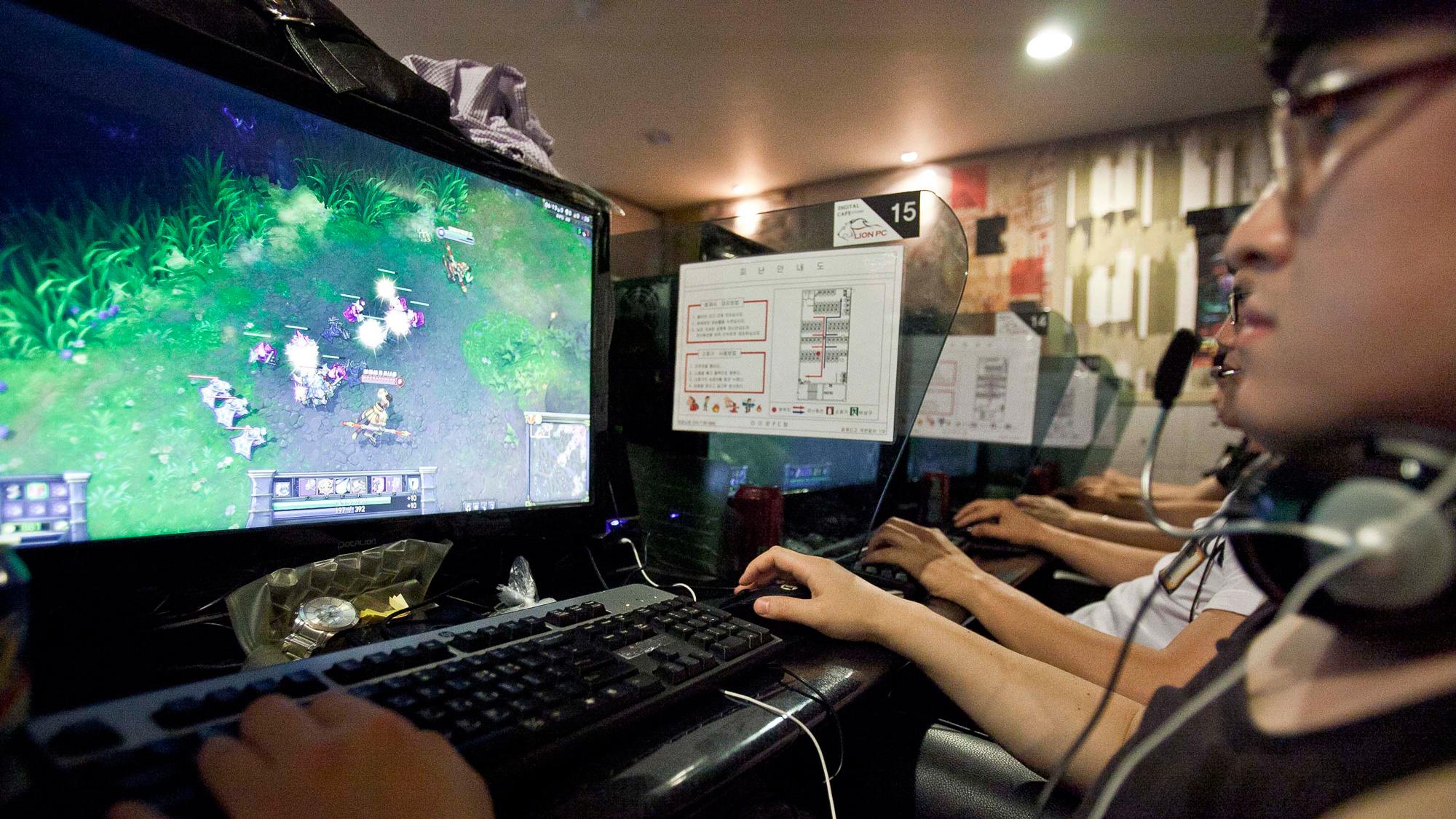
Player Risk & Investor Profit
One professional “Starcraft 2” player, Chris Loranger, noted that a union would be difficult to establish as they “would need a lot of top and popular players to be willing to make self-sacrifices financially in their already short and unstable ‘careers.’” Major League Gaming co-founder and CEO Sundance DiGiovanni added that “For pro-gaming to become a legitimate profession, we need stability…the scale is here…I believe that within a couple of years we’ll see a few hundred people in a position to make a full time living from their winnings and more importantly, endorsement deals” (( Gera, Emily. “Why the unionization of eSports is a difficult if not impossible road.” Polygon, July 19, 2013. ))
The risk for the industry is being offloaded onto the players themselves, who are expected to have short careers and are easily discarded once they are no longer able to keep up with the unhealthy pace of the competition. The short length of a player’s career ensures that there isn’t time or space for them to create something like a union. DiGiovanni admits that “the scale is here,” and since it is, there is no reason for the players to not be profiting like Major League Gaming is. However, what is especially important in this quote is what he identifies that players can make a full time living from – ‘their winnings’ and ‘endorsement deals,’ both avenues that do not require paying players a salary.
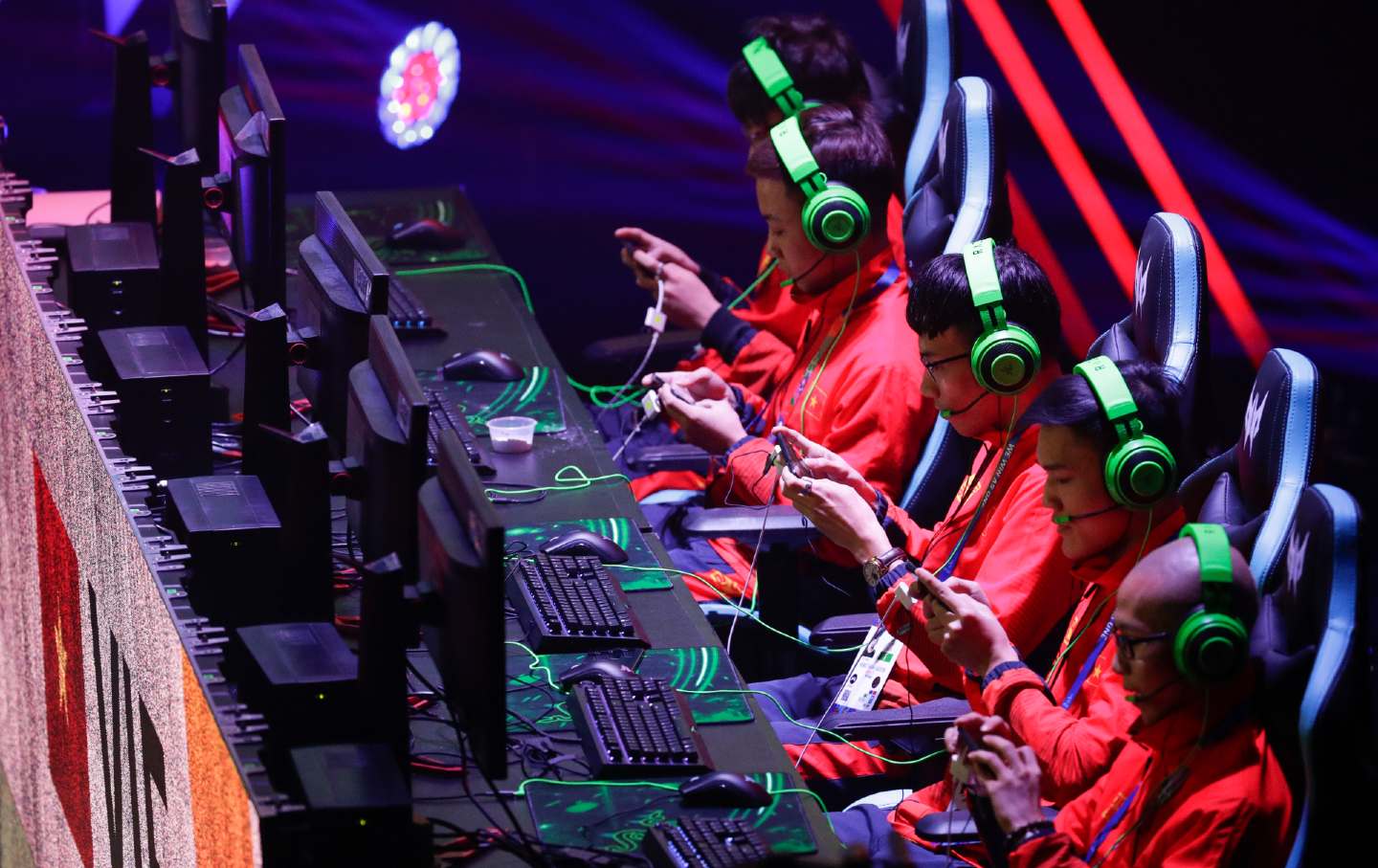
It seems that the best way to ensure players’ well being may be to borrow from traditional sports structures in the form of franchised leagues. The most successful example of this strategy in esports is the Overwatch League; they were the first global esports league to have city-based teams, a decision which brought in more money from investors (who were attaching themselves to specific teams rather than a general competition) and fostered a more passionate fandom. Blizzard, the company behind both the game of choice and the league itself, released an article before teams were even announced that described some requirements for player contracts.
Most importantly, it identified health insurance, a retirement savings plan, and a minimum salary of 50,000$ (( Understanding Esports: An Introduction to the Global Phenomenon, edited by Ryan Rogers, Lexington Books, 2019, 54. )) This is not to say that the Overwatch League is perfect, nor that they treat their players the best – there have been a few horror stories about players’ quality of life and abrupt dismissal from contracts – but it is to say that this path of the franchised league may be the best going forward. The architecture that kept the league running throughout the pandemic and which created requirements for player contracts adds a level of stability that DiGiovanni claimed wasn’t possible.
Transparency In Entertainment
Esports is an industry at the crossroads, a place where sport, media, and internet meld into entertainment. While it may not be a new industry, it definitely diverges from traditional media in broadcast style and organization. In this separation, the electronic sport industry reveals some of the inner workings of the entertainment industry the larger public is generally not privy to.
The investment process and labor struggles have been relatively public, providing insight into many moving parts that exist behind the scenes. Electronic sport has certainly expressed the power of internet accessibility, which truly showed how the internet changed how the everyday viewer consumed content. The industry is growing bigger and bigger, but its apparent wealth still should be taken with a grain of salt. The gold mine promised by developers relies on the devaluation of worker labor. Hopefully, by defining and clarifying confusing portions of the industry rather than sensationalizing them like most mainstream news, there can come a push for equal pay and employee safety.
